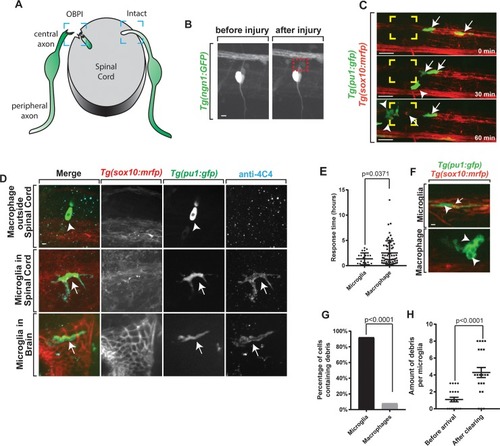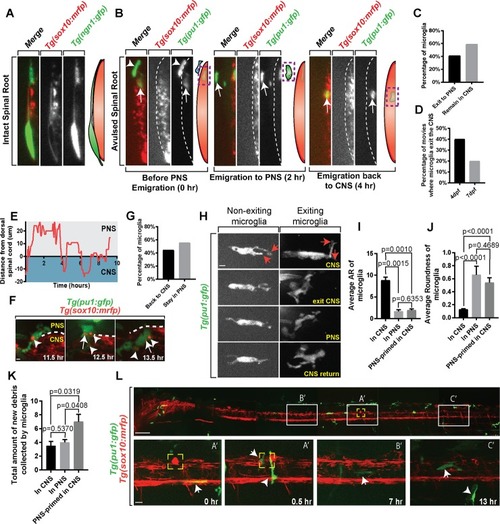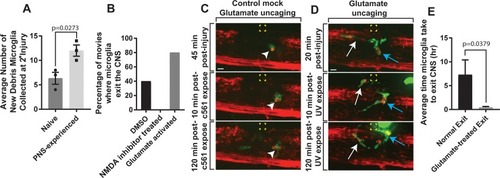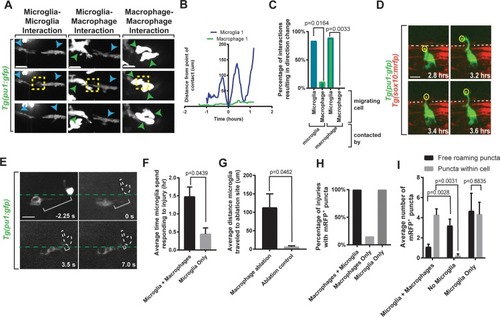- Title
-
Microglia exit the CNS in spinal root avulsion
- Authors
- Green, L.A., Nebiolo, J.C., Smith, C.J.
- Source
- Full text @ PLoS Biol.
|
(A) Graphical representation of OBPI model. Boxes indicate injured and intact DREZ. (B) Confocal z-projection of |
|
(A) Orthogonal rotation view of |
|
(A) Quantification of the average number of new debris from PNS-primed microglia collected at the secondary injury site compared to naïve CNS microglia ( |
|
(A) Images from 24-hour time-lapse movies starting at 4 dpf in |




